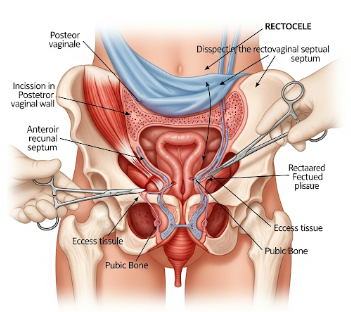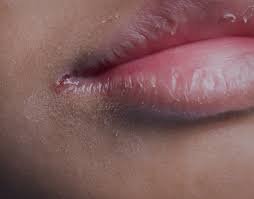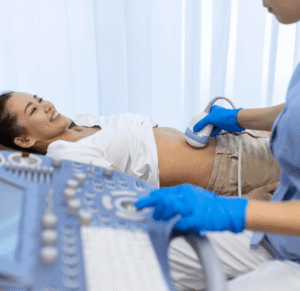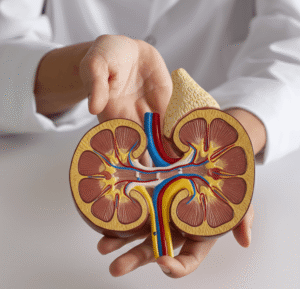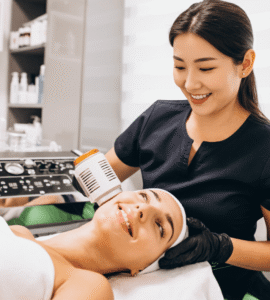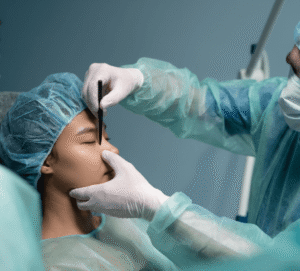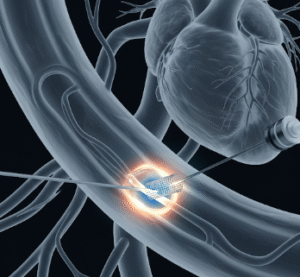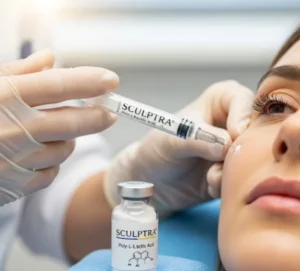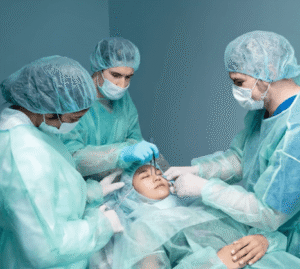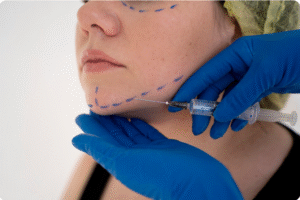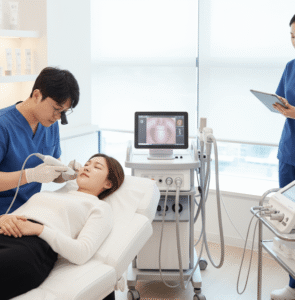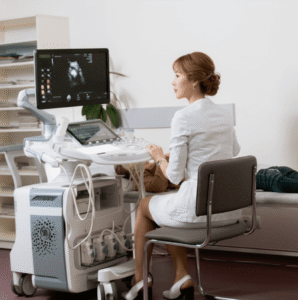Overview
Rectocele repair is a surgical procedure to correct a rectocele, a condition where the rectum bulges into the vaginal wall due to weakening of the pelvic floor muscles. This can lead to pelvic pressure, discomfort, difficulty with bowel movements, and sexual dysfunction.
South Korea is renowned for expert gynecologic and urogynecologic surgeons, advanced minimally invasive techniques, and comprehensive post-operative care, ensuring rectocele repair is safe and effective.
What is Rectocele Repair?
Rectocele repair involves strengthening or reconstructing the rectovaginal septum, the tissue between the rectum and vagina. Key points include:
✔ Corrects vaginal wall bulging and restores normal pelvic anatomy.
➔ Reduces symptoms of pelvic pressure, constipation, and discomfort.
● Can be performed using traditional open surgery or minimally invasive approaches.
★ Improves bowel function and sexual health.
This procedure is recommended for women with symptomatic rectocele affecting quality of life or those who have failed conservative treatments like pelvic floor exercises.
What are the Benefits?
Rectocele repair offers several advantages:
✔ Restores normal anatomy and reduces bulging.
➔ Improves bowel function and eases defecation.
● Minimally invasive options reduce recovery time and post-op pain.
★ Enhances sexual function and pelvic support.
➤ Durable results when performed by experienced surgeons.
Procedure Details
1) How should I prepare for Rectocele Repair?
Preparation focuses on medical optimization and procedural safety:
✔ Medical assessment: Pelvic exam, imaging (ultrasound or MRI), and bowel function evaluation.
➔ Medication review: Adjust anticoagulants or medications affecting healing.
● Bowel preparation: May be recommended to ensure an empty rectum before surgery.
★ Preoperative counseling: Discuss procedure steps, expected outcomes, and potential risks.
➤ Anesthesia evaluation: Procedure usually performed under regional or general anesthesia.
2) What happens during the Rectocele Repair procedure?
Rectocele repair is performed in a surgical suite with the patient under anesthesia:
✔ Incision: Typically made in the vaginal wall over the prolapsed area.
➔ Tissue repair: Weak or stretched rectovaginal fascia is plicated (folded and sutured) to reinforce support.
● Mesh or graft (if needed): Synthetic or biologic material may be used in severe cases for added support.
★ Closure: Vaginal incision closed with absorbable sutures.
➤ Procedure duration: Usually 60–90 minutes depending on severity and technique.
Korean surgeons emphasize precise tissue handling, anatomical restoration, and minimally invasive approaches to optimize outcomes and reduce complications.
3) What happens after Rectocele Repair?
Post-operative care focuses on pain management, wound healing, and gradual return to normal activities:
✔ Hospital stay: Typically 1–2 days depending on procedure type.
➔ Pain management: Oral or IV analgesics; discomfort usually mild to moderate.
● Activity restrictions: Avoid heavy lifting, straining, or sexual activity for 4–6 weeks.
★ Bowel care: High-fiber diet, stool softeners, and hydration to prevent constipation.
➤ Follow-up: Monitor healing, symptoms resolution, and sexual function improvement.
Risks / Benefits
Possible Risks:
✔ Infection at surgical site
➔ Bleeding or hematoma
● Recurrence of rectocele or prolapse
★ Pain or discomfort during intercourse (temporary)
➤ Rare injury to rectum or surrounding structures
Major Benefits:
✔ Restores pelvic anatomy and vaginal support
➔ Improves bowel function and reduces constipation
● Minimally invasive options shorten recovery and hospital stay
★ Enhances sexual function and quality of life
➤ Durable results with experienced Korean surgeons
Recovery and Outlook
✔ Immediate recovery: Mild pelvic discomfort; pain managed with medications.
➔ Hospital stay: 1–2 days; some cases may be outpatient.
● Activity: Gradual return to daily activities; avoid straining for 4–6 weeks.
★ Long-term outcome: Most patients experience improved bowel function, pelvic support, and reduced prolapse symptoms.
➤ Follow-up: Regular check-ups to monitor healing and symptom resolution.
When To Call the Doctor
Contact your doctor immediately if you notice:
✔ Fever, chills, or signs of infection
➔ Persistent bleeding or discharge from incision site
● Difficulty urinating or severe constipation
★ Severe pelvic pain unrelieved by medications
➤ Recurrence of prolapse or bulging
Best Korea Option / Process
South Korea provides expert rectocele repair services with:
✔ Leading hospitals: Samsung Medical Center, Asan Medical Center, Severance Hospital Gynecology & Urogynecology.
➔ Experienced urogynecologists skilled in vaginal and minimally invasive repairs.
● Comprehensive perioperative care: Pre-op evaluation, surgery, post-op monitoring, and pelvic rehabilitation.
★ Advanced surgical techniques including mesh reinforcement or biologic grafts when needed.
➤ Medical tourism support: Translation, appointment coordination, and continuity of care for international patients.
✅ Highlights:
✔ Rectocele repair restores pelvic anatomy and reduces vaginal bulging
➔ Improves bowel function and sexual health
● Minimally invasive approaches shorten recovery and hospital stay
★ Risks include infection, bleeding, recurrence, and temporary pelvic pain
➤ Korean hospitals provide expert surgeons, advanced techniques, and comprehensive post-op care

